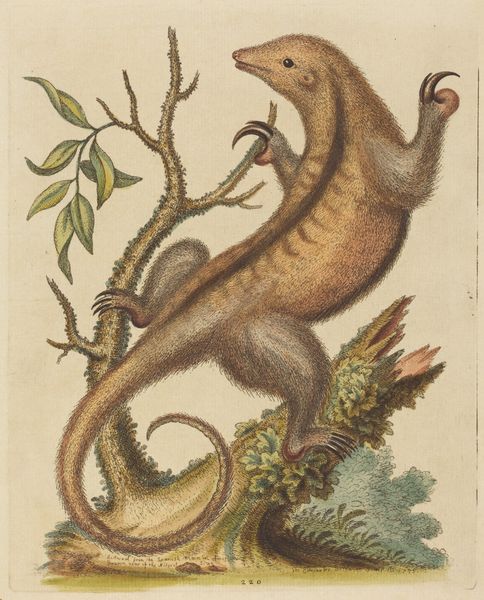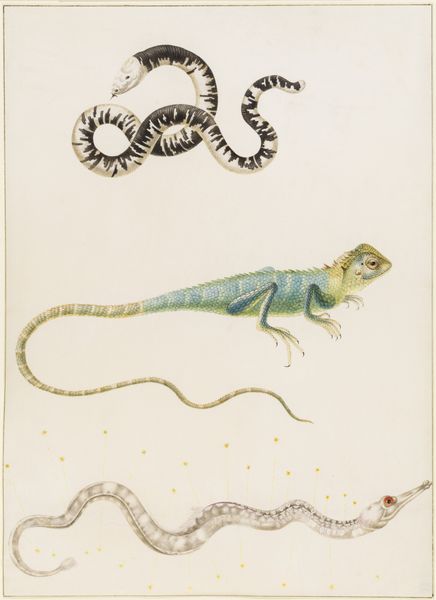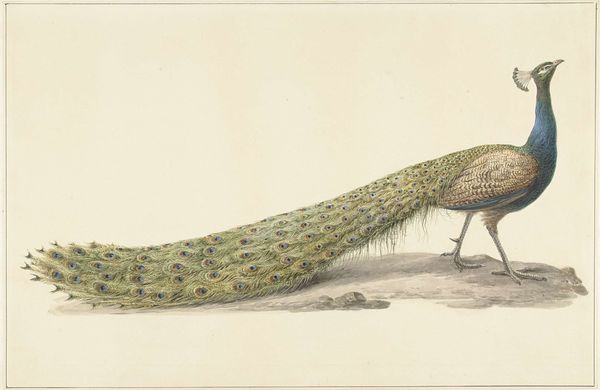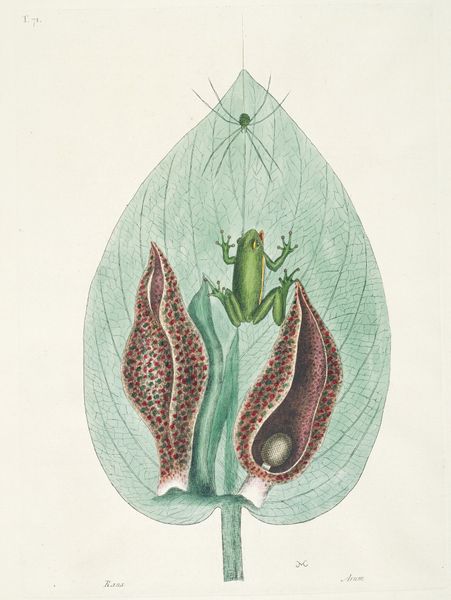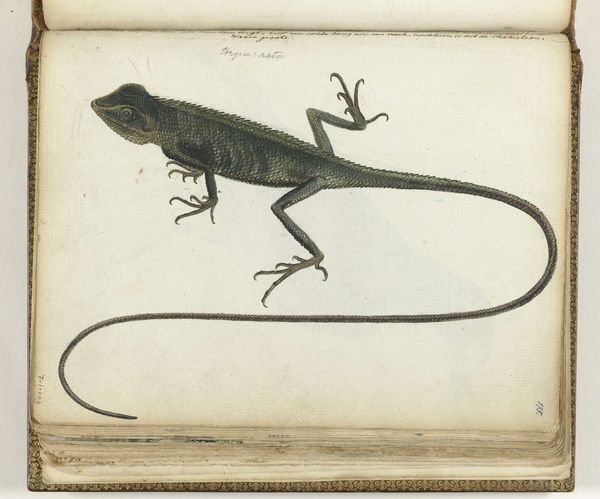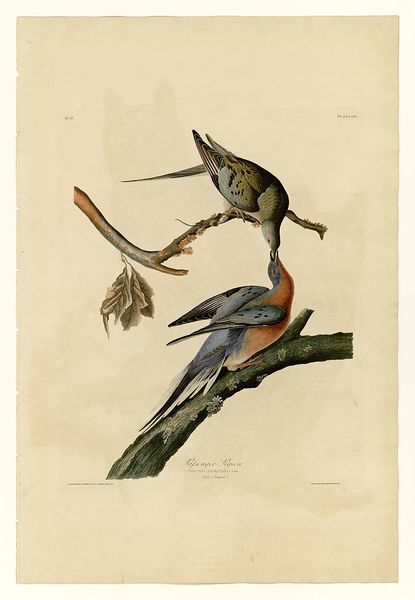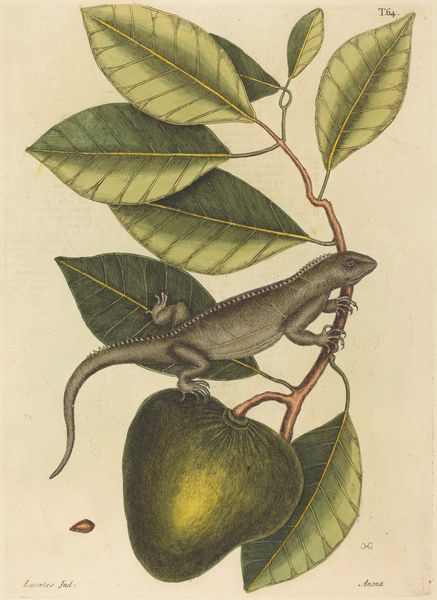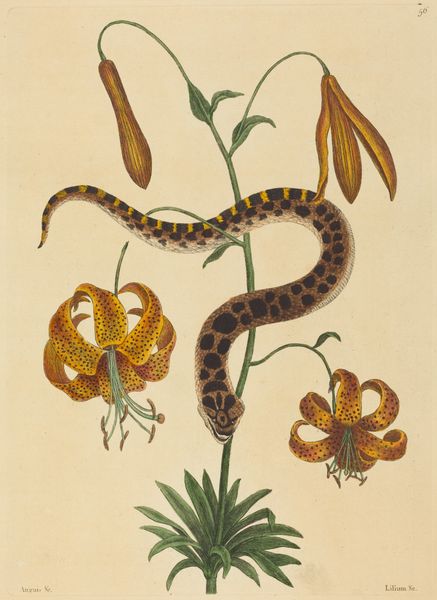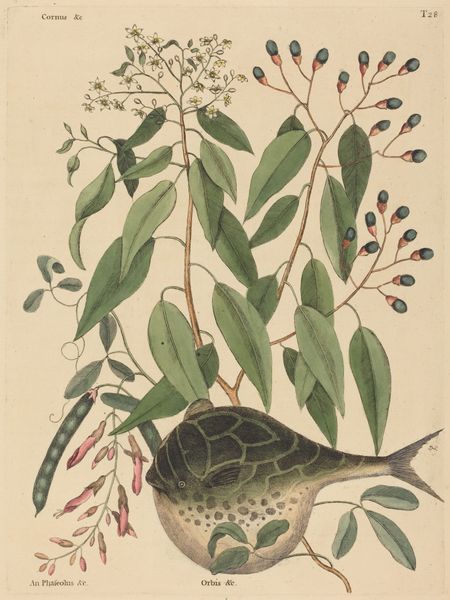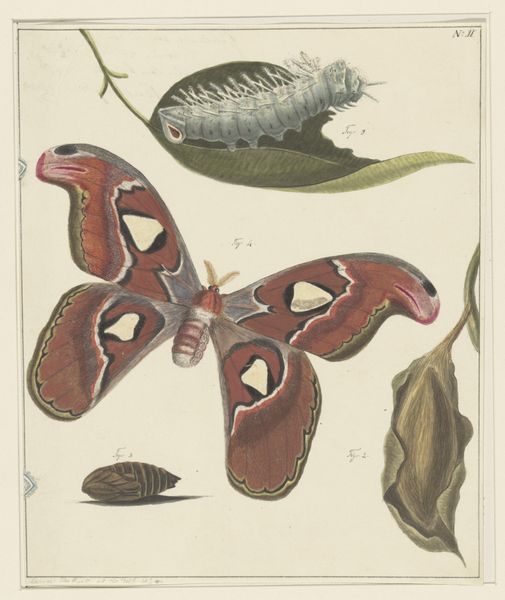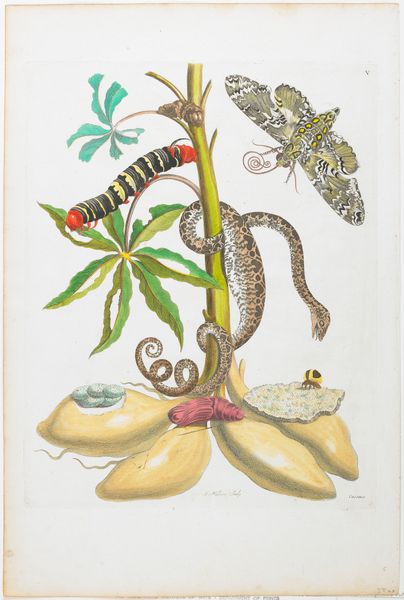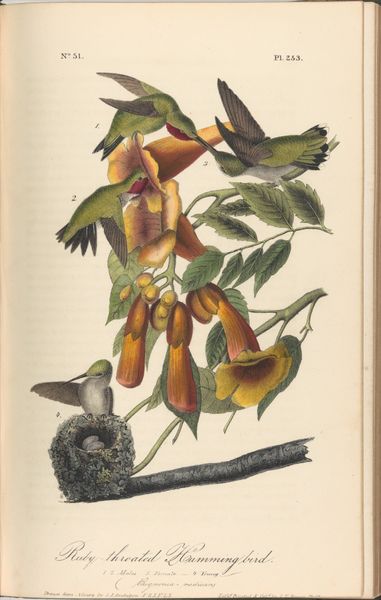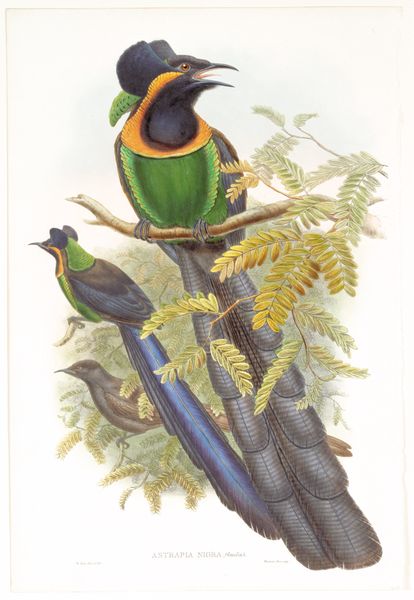
drawing, hand-colored-etching, print, etching
#
drawing
#
hand-colored-etching
# print
#
etching
#
landscape
#
watercolour illustration
#
naturalism
Dimensions: 13 3/4 x 10 in. (34.93 x 25.4 cm) (sheet)
Copyright: Public Domain
Curator: Here we have Mark Catesby’s "The Bull Frog," a hand-colored etching created between 1731 and 1743. It's quite an intriguing image. Editor: My first thought is how strangely endearing it is! The pose is so upright and almost confrontational, and the textures—smooth skin, delicate flower—are surprisingly tactile. Curator: Catesby was an English naturalist, and his work was hugely influential in shaping European perceptions of the flora and fauna of the American colonies. The print isn't just a study of the frog; it's also tied to the social and scientific context of exploration and documentation. He documented specimens with an empirical approach that was highly valued. Editor: Right, I see how the details speak to that intent. But the composition also holds up as simply compelling design. Note how the curve of the frog’s body echoes the delicate bend of the flower stem—a study in contrasts between weight and delicacy, muted and pure colour. It seems the etching medium creates beautiful contrasts within each shape as well. Curator: That attention to the balance between naturalism and aesthetic appeal, and the use of print media helped to disseminate a specific idea of the 'New World,' contributing to both scientific understanding and, inevitably, colonial narratives. What seems like a charming picture also had social and political reverberations. The selection of objects says a lot about colonial powers as well, not necessarily about pure observation. Editor: The rendering of form does have this remarkable objectivity. See, for example, how each of the limbs create visual balance, leading the eye across the work. But those flat, stylized webbed feet and even those bright staring eyes almost undermine any kind of pure, clinical aesthetic. Curator: Yes, and remember these images were produced for a European audience eager for information and, perhaps, titillation about the exotic "other." They weren't unbiased reports; they helped establish hierarchies of knowledge. Editor: So beyond its naturalistic goals and any symbolic readings, this etching achieves, I think, an independent success based purely on form and graphic articulation. Curator: Absolutely, understanding its layered contexts only deepens our experience of "The Bull Frog". Editor: It offers a lot to consider visually and historically, doesn't it?
Comments
No comments
Be the first to comment and join the conversation on the ultimate creative platform.
